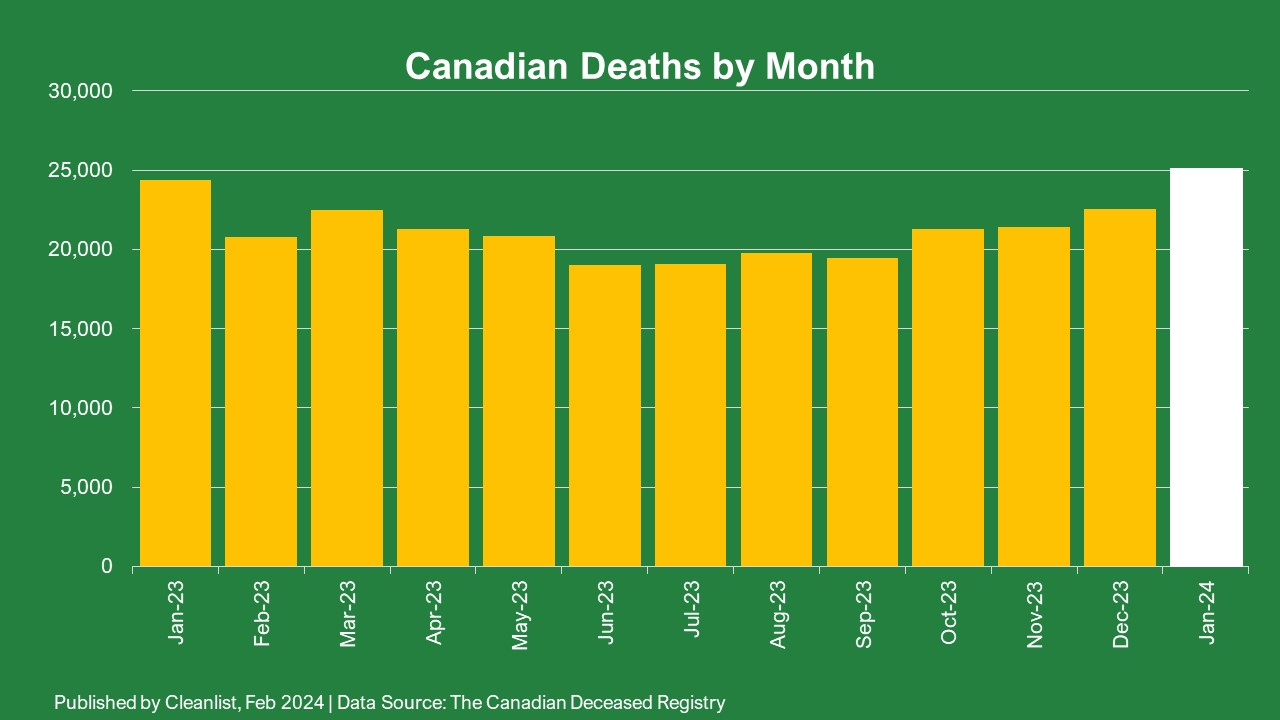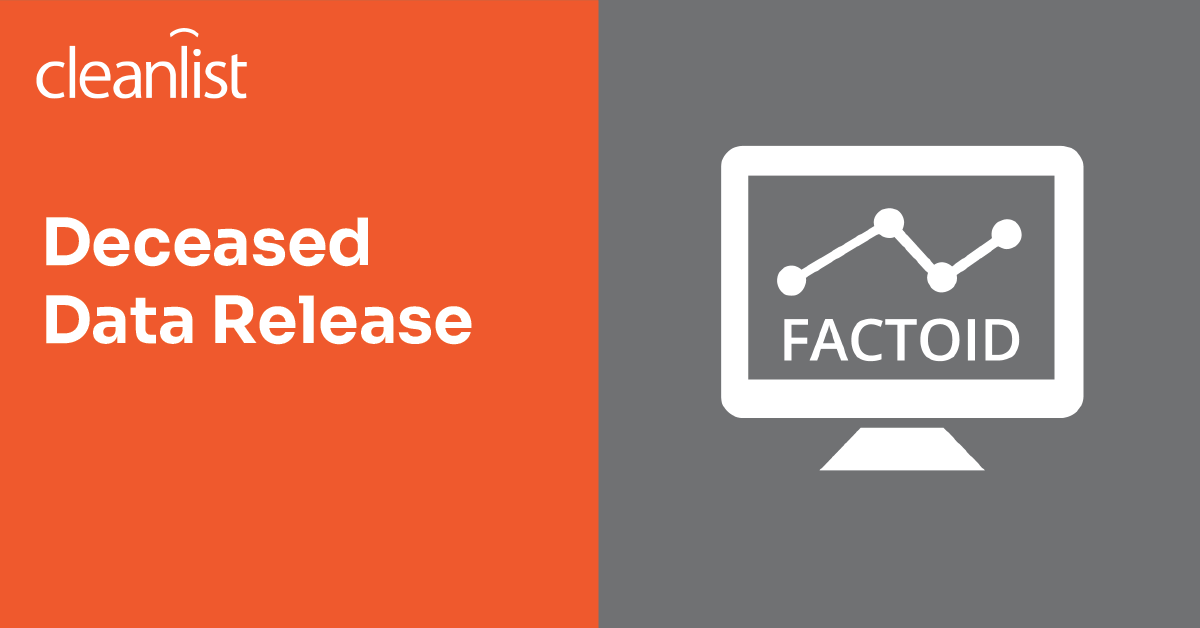
Mortality Rates: Higher or lower in 2024?
Cleanlist reports that 25,112 Canadians passed away in January 2024. This is a slight 3% increase compared to January 2023 and a larger 11.5% increase from December 2023. The average age of death in January 2024 was 78, the same as January 2023 and one year older than the average age of death in December 2023. This data is summarized from the Canadian Deceased Registry.
Notable insights from January 2024:
- The provinces that saw a decrease in deaths over the year (January 2023 to January 2024) were British Columbia (down 3.1%), New Brunswick (down 2.5%) and Newfoundland (down 1.2%).
- The provinces that experienced the highest number of deaths in January 2024 were Nova Scotia (up 20.5%), Quebec (up 15.8%) and British Columbia (up 15.2%).
- The provinces that experienced the highest number of deaths in January 2024 compared to January 2023 are Prince Edward Island (up 23.1%), Saskatchewan (up 9%) and both Manitoba and Quebec (up 8%)
- Looking at every month in 2023, the average age of death from January 2023 to the end of 2023 was 77.8.

What factors may have contributed to the increase in deaths in every province between December 2023 and January 2024?
One could speculate many reasons why mortality rates increased in January compared to December. Factors to take into consideration that could have implicated more deaths in January 2024 in particular include an uptick in illnesses, including an outbreak of a new strand of COVID-19. Since this is a busy time for gathering socially, the spread of infectious diseases increases this time of year. Another reason why deaths may have increased in January 2024 is the growing average age of Canada’s population. According to Worldometers, the median age in 2024 is 40.6 years old, whereas in 2000 it was 35.8. This number has continued to increase with each passing year.
How Is Canadian Deceased Data Used?
There are many ways organizations can effectively utilize mortality data. Here are the top 3.
#1 – Fraud Protection
In 2022, the Royal Canadian Military Police (RCMP) reported that there were 19,560 counts of identity theft in Canada amounting to $146 million in losses. Fraudsters will often exploit deceased individuals’ information to create false identities and engage in illicit transactions. They are expecting fraud activities to increase in 2023 and 2024.
Credit issuers can protect themselves by cross-referencing new applicant information against the Canadian Deceased Registry.
#2 – Policy Over-Payments
Pension funds and some annuity insurance policies make benefit payments to their policyholders to the date of death. When the death is not reported, or when the reporting is delayed, significant over-payments occur.
Payors can reduce over-payments and improve administrative efficiency by regularly scanning their payee population against the Canadian Deceased Registry.
#3 – Marketing & Reputation Management Mishaps
Organizations involved in marketing communications, fundraising, and customer relations can find themselves in an awkward and unpleasant situation by attempting to solicit deceased family members. This damages valuable brand reputations.
Marketing and CRM managers can avoid these situations by scrubbing their campaign lists against the Canadian Deceased Registry.
About the Data
The data presented in this report was summarized by Cleanlist from the Canadian Deceased Registry, Canada’s only national registry of deceased Canadians. To learn more about the database or for licensing information:
Cleanlist is Canada’s largest customer data company. We clean, enrich, and validate business and consumer data. We’re also experts in data-driven document composition and Canada’s largest data provider for digital and offline marketing. To learn more, visit us at Cleanlist.ca.



